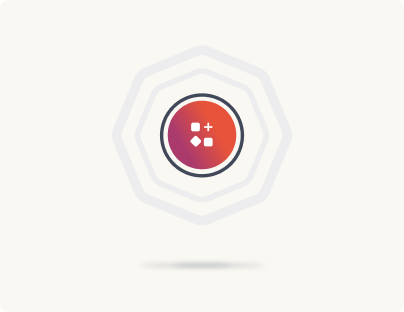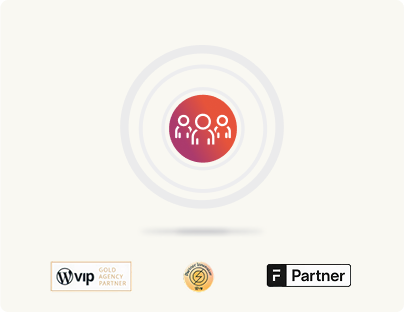SnapWP is now public!
Last year, we provided a sneak peek of SnapWP, our flexible solution for turn-key, headless WordPress. The positive reception since our early demos at WCUS 2024 confirmed we were on the right track.
We are thrilled to announce that SnapWP is now publicly accessible on GitHub. Although it’s an experimental product, we believe it’s ready for public development to accelerate its growth and push forward the larger headless WordPress ecosystem.
Wait, why another headless solution?
Although headless WordPress offers many potential benefits to enterprise businesses, the reality often falls short. Rather than empowering developers to effortlessly create unique frontend experiences on a more secure, performant, and developer-friendly foundation, most headless WordPress projects spend significant resources recreating frontend functionality already built into traditional WordPress.
This translates to high upfront and maintenance costs for the lifecycle of the project, and requires expertise in multiple languages and codebases. The result? A web app that is often subpar compared to—and more tightly coupled than—the WordPress-flavored PHP you’d get from an enterprise-grade agency.
SnapWP challenges this paradigm by asking: What if headless WordPress development were additive?
SnapWP extends WordPress
SnapWP treats WordPress as the full source of truth for all default site behavior. It does so by leveraging the modern Editor and Block Theme features to ensure that your WordPress-configured designs, global styles, Interactive Blocks, template hierarchy, and routing work right out of the box. An additive developer experience (DX) layer then lets you target, override, or opt out of traditional WordPress behavior at a granular level—enabling you to integrate custom React (for now 🤫) components and functionality seamlessly on your frontend.
In other words, with SnapWP, “headless WordPress” behaves just like traditional WordPress—until you decide it shouldn’t.
In business terms, this means your team can stop wasting time & money to reinvent the wheel & keep it rolling, and instead focus on building the features and experiences your users expect.
What’s new & improved
Here’s a quick look at what we’ve shipped since our last round of demos:
- Simpler Setup: The SnapWP Helper plugin now provides copy-pastable .env variables from your WordPress admin, and a new npx snapwp command streamlines localhost setup down to just 3 steps.
- (Overloadable) Support for Core Blocks: WordPress core static blocks are generally supported, and we’re working to add support for the remaining dynamic blocks, embeds, and Block Supports. There’s also an initial API which lets you overload the React components used for individual blocks, which in the world of Block Themes means pretty much everything is overloadable.
- Enhanced Compatibility: With the new templateByUri GraphQL query, we now capture and load all WordPress-enqueued fonts, scripts, and stylesheets for the route, improving compatibility with custom and third-party blocks out of the box.
- Interactivity API/Script Modules Support: In addition to traditional scripts, SnapWP now supports loading Script Modules and the Interactivity API, modern features powering the newest wave of Block enhancements. Work is ongoing to support specific blocks that inject HTML into the footer, such as the Core Image lightbox feature.
- Improved tooling for developers: Our example starter is now preconfigured for Typescript, GraphQL Codegen, Prettier and ESLint. The configs are available as individual packages, so you can bring enterprise-grade code quality to your other projects while making it easier for other developers in the headless WordPress ecosystem to contribute.
- Documentation: Writing good documentation is a never-ending process, and we’ve only just started. Check out https://github.com/rtCamp/snapwp/tree/develop/docs, and stay tuned for more how-tos and tutorials coming soon.
Then there’s all the usual work that’s needed to build robust, enterprise-grade software: ensuring strict code quality and standards, including extensive inline documentation, expanding code coverage for unit and E2E tests, and dozens of upstream contributions to the headless WordPress ecosystem to improve performance and reduce technical debt for everybody.
What’s next?
We’re excited to build on this initial release to improve SnapWP, as well as to make it and headless WordPress as a whole more approachable by developers and end users. Tentatively, and in no particular order:
- DX Improvements:
- Actions and Filters powered by npm WordPress/hooks to support even more targeted customization with even less custom code.
- A “Bring-your-own Query Library” refactor will use composability to allow you to use npm tanstack/react-query as a drop-in replacement for npm apollo/client, or whatever your team’s Query Library of choice may be.
- Preconfigured unit and E2E tests for the starter help prevent you from deploying broken code, and make it easy to write tests for your custom work.
- New Features :
- Support for the remaining dynamic blocks like Query, Search, and Comments, and additional Block Supports like Duotone and the Interactivity API-powered Lightbox.
- Support for additional build/caching strategies, such as fully static builds, ISR, etc.
- Our first two @feature packages will add drop-in support for SEO and Form plugins, and an API for anyone to create and release their own reusable frontend “extensions” for SnapWP.
- Documentation: We have several tutorials lined up that will cover common (and maybe a few “crazy”) use cases related to using and extending SnapWP.
And of course, we’ll keep actively contributing upstream to WordPress, WPGraphQL, and other projects as we continue to push the headless WordPress ecosystem forward.
Please note, this list of items is subject to change as we continue to gather feedback from more users. You can see what we’re working on in the GitHub repo.
We’d love to hear from you!
We’re excited to gather feedback from our partners and the wider community to prioritize future features.
If you have considered going headless for your WordPress setup for marketing, customer UX, engineering or other reasons, we’d especially love to chat! Reach out to us via snapwp@rtcamp.com or put in an inquiry.
You can also meet us at WordCamp Asia – we’re bringing live demos and would be happy to chat in the hallway track! Or you can try SnapWP yourself using our getting started guide and raise a ticket on the public repo.
On this page








Leave a Reply